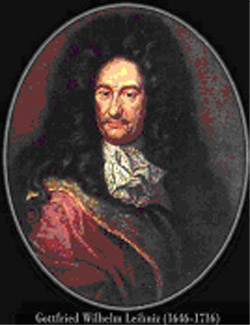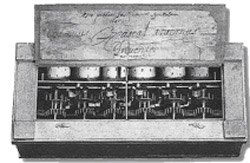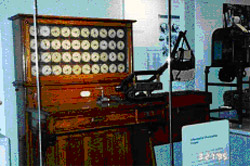Binary Data Storage and Manipulation
Demonstrating Physical Representation and Implementation |
|
|
::History::
The history of number systems and counting theory is the basis from which computing is derived. Since this is the case, it is appropriate to give credit to the development of these theories and the early devices that implemented them.
Binary System
Leibniz sought to reduce all logic to exact statements; he believed logic could be moved into a verbal state into an absolute mathematical condition.
He found conformation for his theories in a Chinese Book of Changes, in which he discovered a depiction of the universe as a progression of contradicting dualities, a series of on-off, yes-no possibilities.
He refined his binary system into seemingly infinite rows of ones and zeros, even though at this point they had no use.
Leibniz gave some thought to a machine that would incorporate his system, but never generated any means of physical implementation.
 Abacus
Abacus
The name abacus derives from Greek word ABAX, meaning table or board covered with dust.
Its origins are unclear, but it is generally assumed that it originated in the Middle East sometime around the Middle Ages (500-1000 CE).
The device can be used to perform addition, subtraction, multiplication, and division and can also extract square-roots and cubic roots.
Each bead in the upper deck has a value of five; each bead in the lower deck has a value of one.
Counting involves moving the beads toward the middle beam. As five beads are counted in the lower deck, the result is carried to the upper deck, and after both beads in the upper deck are counted,
the result is carried to the left-most adjacent column. The abacus is applicable for any base number system, and is even still in use in several Asian countries.

Pascalina
The Pascaline is a device consisting of system of gears and discs using Pascal's realization of tens and hundred being carried.
Each gear represents a tens, hundreds, thousands, etc, and a gear shifts when the lower power of 10 rotates ten times.
(This principle is still used in odometers in cars, gas pumps, and electricity meters)
The numbers to be added are set up via turning discs on the bottom of the device.
Subtracting required some adaptations to it so it counted backwards, and division and multiplication involved repeating the addition or subtraction.
This counting machine paved the path for more complicated counting machines by later generations of inventors.

Analytical Machine (Engine)
The concept for a general-purpose digital computer was proposed by Charles Babbage in 1837 and was upgrade to his Difference Engine.
Due to lack of funding and technical difficulties (the precision for gears required was not possible until decades later), Babbage was never able to actually construct the machine (it still has never been physically developed).
It was to be built from brass gears powered by steam with input given on punched cards. It employed ordinary base 10 arithmetic. Also implemented a store (memory) capable of holding 1000 numbers of 50 digits each.
Also had an arithmetical unit (mill) that was able to perform all four arithmetical operations. This machine has been widely recognized as a major contribution to the basic design of the computers we have today, and
the programming language to be employed was similar to modern day assembly languages in its loops and conditional branching.
Tabulator Machine
Developed by Herman Hollerith around 1880 (he also founded the company that was to become IBM).
He chose the punched card as the basis for storing and processing information similar to Babbage.
The card was placed in a sensing mechanism of the tabulator, which had one pin for each possible position on the card.
Where there were holes, the pin would pass through, connect with a bed of mercury beneath the sensor, and effect an electrical contact.
Processing speed was slow, the machine made order out of uncontrolled masses of data.

|
|
|